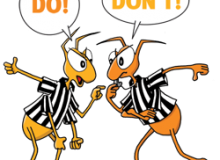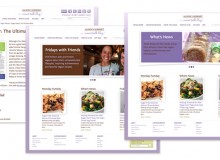 Start collecting corporate brochures. Most of them will come in handy when you can’t sleep at night. Here are two-dozen tips for making your brochure reader-friendly, inspiring and persuasive.
Start collecting corporate brochures. Most of them will come in handy when you can’t sleep at night. Here are two-dozen tips for making your brochure reader-friendly, inspiring and persuasive.
Do
- Have an objective for the brochure.
- Develop a creative brief – use it for buy-in as well as a roadmap.
- Integrate your brochure within a larger communications strategy.
- Demonstrate that you understand your audience.
- Consider versioning for major markets – a brochure can’t be everything to everyone.
- Position, position, position.
- Talk about markets, products, services and solutions – show them in use whenever possible.
- Be conversational – you’re building a relationship.
- Say something specific – a 99% customer satisfaction rating means more than a corporate commitment to customer service.
- Develop good captions – one of the most read and recalled copy elements.
- Include contact information on the brochure – ditto for everything that accompanies it.
- Hire a professional proofreader – they’re cheap and can save your butt.
Don’t
- Assume that no one reads today – people don’t read lousy copy.
- Use corporate-speak, jargon and over-used phrases.
- Make third-person references to your company – this isn’t a term paper, be personal.
- Write in the passive voice or use other complicated verb tenses (hint: helping verbs + past tense of action verb).
- Bore readers with technical content – use charts, graphs and diagrams.
- Assume readers will automatically turn the page – you have to earn their interest at every point in the brochure.
- Overlook the cover as your first opportunity to creatively position your organization.
- Write or design by committee – they’ll suck the life out of the brochure.
- End with a table of contents or corporate overview – there are better uses for your closing page, like suggesting an action step.
- Try to speak to everyone – focus on your key targets.
- Use creative sources that know nothing about your market – you’ll spend all your time getting them up to speed.
- Fail to develop a distribution plan – not everyone who makes an inquiry is a qualified candidate.
One final bit of advice. Develop a schedule and stick to it. Corporate brochures have a tendency to become never-ending projects. If you thought the brochure was important enough to do in the first place, then it’s important enough to do on time.
![]()
Talk to Your Printer. Have your designer bring the printer into the mix early. They’re part of your creative team, and a good rep can help with special techniques, provide paper dummies, ink draw downs, make the brochure more eco-sensitive and keep you from creating a piece that looks great on-screen but won’t print well.
![]()
— by Larry Bauer






